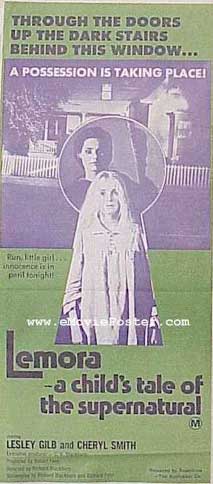





| movie fiction 

|
|
 Other images
Other images |
|||||||||||
Description:
A young girl, who is an innocent singer in the local Baptist church, receives a letter that says her gangster father is dying soon. She must travel alone in order to be with her dying father, and the bus driver that brings her there warns the girl that the town is seized by an epidemic. This epidemic causes some of the inhabitants to be pale with fangs, others to have decaying skin and an animalistic nature. Reaching the house her father is in, the woman is locked in a stone shed to be taunted by vampire children.
The young girl soon finds herself under the spell of a female vampire called Lemora. She is the leader of some sort of religious cult in a small village deep into the woods and she plans to initiate the young girl in the cult's activities. The young girl, sensing that something is wrong, flees from Lenora's grasp and tries to find a way out of the labyrinthine woods.
|
Qvamp says: This vampire film was banned by the Catholic Film Board for 21 years. I wasn't overly impressed by the movie, and it had very little queer content. The vampire Lemora would constantly compliment the girl's figure, and enjoyed bathing and tickling her. But that's the totality of 'lesbian' content. From Halloween Candy, by Thomas M. Sipos, p. 225: We are looking for a copy of this. If you own one and want to get rid of it, let us know! |
|
Saw it? Want others to know what you thought of it, then rate this movie
Want to buy it?


© QueerHorror.com 1999-2006. Any suggestions, questions or comments, please e-mail us